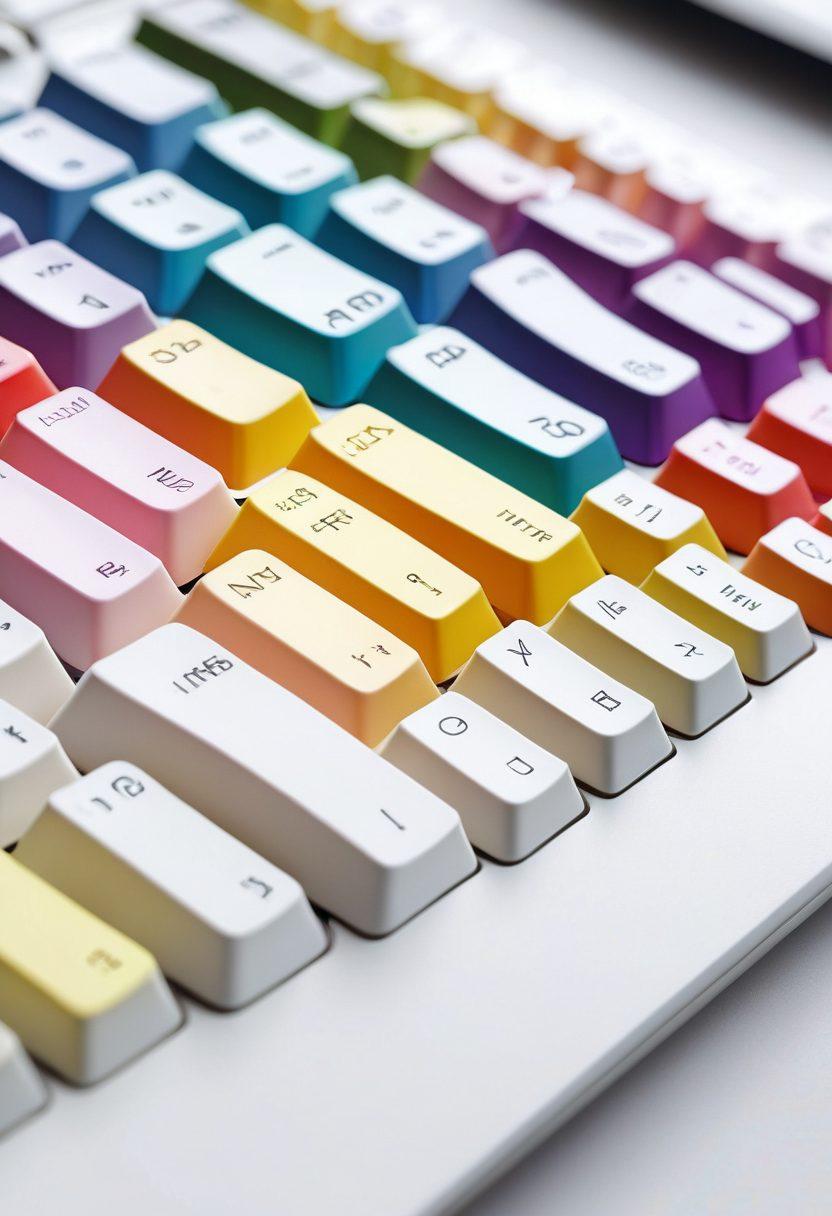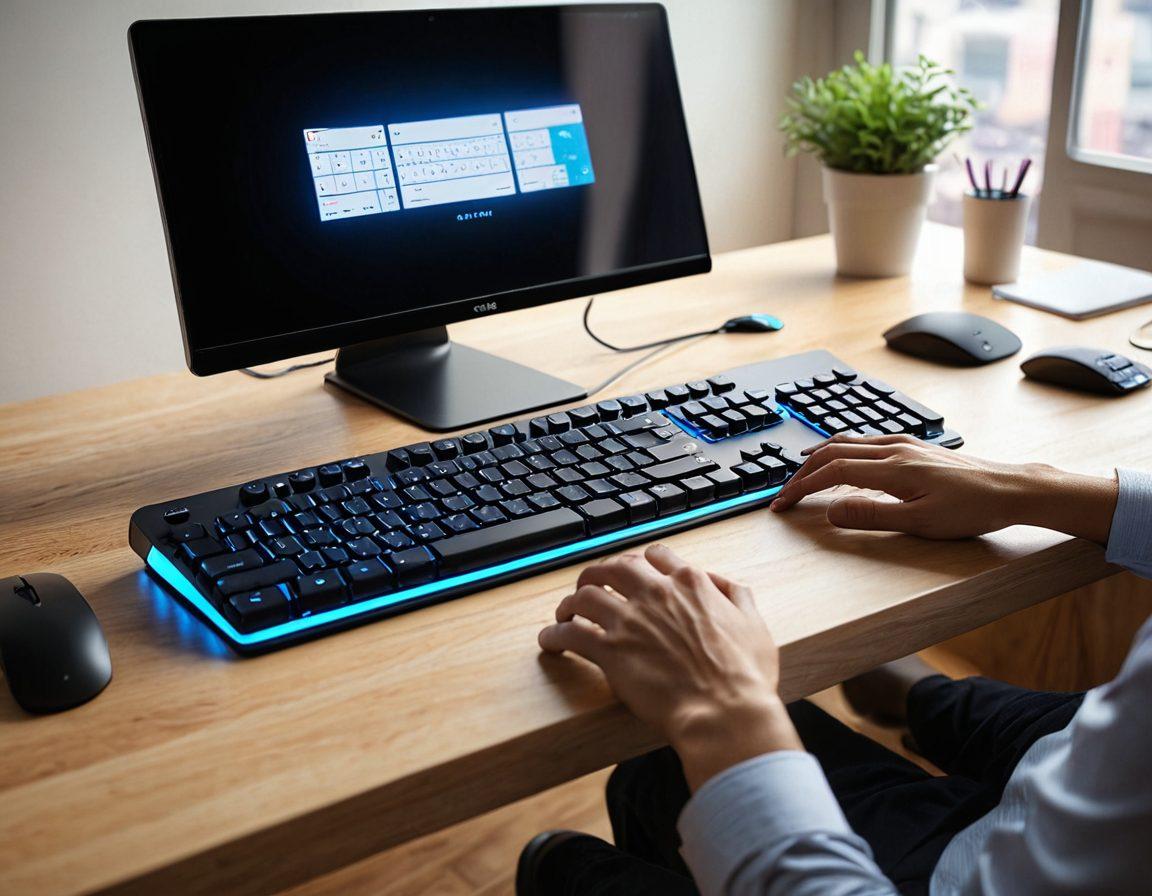Mastering the QWERTY: Unlocking the Secrets of Efficient Digital Typing
Have you ever found yourself yearning to type just a little faster, or to glide effortlessly across your QWERTY keyboard? If the answer is yes, you’re not alone. In today's fast-paced digital world, optimizing your keyboard layout is essential for efficient typing. Imagine effortlessly crafting emails, programming codes, or finishing assignments at lightning speed. With just a few tweaks to your keyboard configuration and typing techniques, you can unlock the secrets of effective digital typing. Let's dive into how you can master your keyboard and transform your typing experience!
First things first: understanding the QWERTY keyboard layout is crucial. Designed in the 19th century, this classic keyboard design is still the most popular input device today. But just because it’s popular doesn’t mean it’s perfect for everyone. Many users are unaware that there are alternative layouts, such as Dvorak or Colemak, that promise more efficient text entry. However, before you take the plunge into a new layout, consider optimizing your existing QWERTY setup. Would a simple adjustment to your typing technique or a focus on keyboard shortcuts enhance your speed without forcing you to change everything?
Now, let’s talk ergonomics. Your keyboard’s physical setup can significantly affect your typing performance. An ergonomic keyboard can help avoid strain and discomfort, promoting better posture while you type. Think about the angle of your computer keyboard or how far your hands stretch to reach keys. Are you typing with ease, or do you find yourself adjusting constantly? Make it a point to experiment with different keyboard positions and designs until you find one that feels just right. The more comfortable you are, the more efficient your typing becomes. After all, typing should feel effortless, like an artist painting on a canvas.
And let’s not overlook the power of keyboard shortcuts. Learning these little nuggets can drastically reduce the time spent on text input. Ever heard the phrase, “Time is money”? Well, the more time you save tapping your keys, the more productive you can be. Whether it’s using Ctrl+C for copy or Ctrl+Z for undo, keyboard shortcuts are silent superheroes in your typing arsenal. Set aside time to memorize frequently used shortcuts. Imagine the joy of knowing you mastered a slew of handy shortcuts – it’s like having a secret weapon at your fingertips!
Lastly, consistent practice is paramount for honing your typing skill. The more you engage with your keyboard—whether it's writing blogs, chatting online, or working on reports—the more natural it will become. Consider setting daily goals for your typing speed or accuracy, and don't shy away from typing games or challenges available online. Remember, even the most seasoned typists started as beginners. What small steps will you take today to improve your digital typing?
Transform Your Text Input Skills: Essential Techniques and Shortcuts for QWERTY Mastery
In today's fast-paced digital world, typing isn't just a mundane task—it's an essential skill that can define your productivity and efficiency. Have you ever found yourself spending too long on a simple text entry or struggling to keep up with the flow of your thoughts? If your response is a resounding 'yes,' then it's time to transform your text input skills! By understanding the fundamental techniques and shortcuts of the QWERTY keyboard layout, you'll unlock a world of possibilities that will enhance your typing experience and ultimately improve your performance.
The QWERTY keyboard, the most popular keyboard design in use today, was originally crafted more than a century ago. Can you believe that? Despite its age, the QWERTY layout remains the backbone of modern input devices. Mastering this keyboard configuration can feel like learning a new language, but unlike traditional languages, the more you practice, the more fluent you become! So, what are the essential techniques that can turn you into a QWERTY maestro? Let's dive right in!
To start, the cornerstone of efficient digital typing is adopting the proper typing technique. It's crucial to maintain a relaxed posture and utilize all your fingers for maximum speed and accuracy. Imagine your hands gliding effortlessly across the keyboard, each key press intentional and crisp. Incorporating proper finger placement—home row positioning, in particular—lays a solid foundation for not just speed but also endurance. Have you ever tried to type for hours on end and felt that strain? A good typing technique minimizes fatigue, allowing you to dominate your text input tasks with ease.
Equally important are keyboard shortcuts, the secret weapons of seasoned typists. These nifty combinations can save you time and effort during digital typing sessions. For instance, did you know that using 'Ctrl + C' to copy and 'Ctrl + V' to paste can streamline your workflow immensely? These shortcuts make it possible to execute commands with a flick of your fingers, transforming your approach to text entry from sluggish to lightning-fast. So, which keyboard shortcuts could revolutionize your typing experience?
Lastly, consider looking into ergonomic keyboards if comfort is a primary concern. A well-designed ergonomic keyboard can significantly improve your typing efficiency by promoting healthy wrist positioning and reducing strain during long typing sessions. Whether you’re a professional writer, an enthusiastic gamer, or just someone who likes to communicate in style, finding the right input device can be pivotal in your typing journey. After all, the right tools can make all the difference—so, are you ready to invest in mastery of your QWERTY skills?
Discover the Ergonomics of Digital Typing: How Keyboard Design Enhances Your Efficiency
Have you ever paused to wonder about the design of the QWERTY keyboard you spend hours using every day? The truth is that the keyboard layout we often take for granted plays a critical role in shaping our digital typing efficiency. You might be surprised to learn that ergonomics—the study of people's efficiency in their working environment—has a significant impact not only on our typing technique but also on our overall comfort while using a computer keyboard. So buckle up, as we explore how your keyboard design can enhance your efficiency and transform your typing experience into a seamless workflow.
Imagine this: You're typing furiously, fingers dancing across the QWERTY layout. But does this fluidity come naturally, or is it a result of consciously developed skills? The answer is often a mix of both. Ergonomic keyboard designs take into consideration the natural position of your hands, aiming to minimize strain and fatigue during prolonged text entry sessions. A well-designed keyboard can be a game-changer, allowing you to maintain speed and accuracy while avoiding discomfort. So, what are the features of an ergonomic keyboard that can revolutionize your typing routine?
Let’s delve deeper into keyboard configuration. The traditional QWERTY keyboard—although designed with its own quirks and characteristics—may not be the best match for everyone. Have you ever experienced wrist cramps or aching fingers after an extensive typing session? If so, this is a clear indication that you should explore alternative keyboard layouts or even specialized ergonomic keyboards. These designs can offer a significant change in your typing experience, promoting better hand positioning and reducing the risk of repetitive strain injuries—a common plight for avid digital typists.
But mastering typing is not all about hardware; your typing technique and habits play an equally crucial role. Have you ever experimented with keyboard shortcuts? These nifty combinations can drastically cut down your time spent on text input, allowing you to maximize your output in a fraction of the time. By learning to use these shortcuts effectively, you can enhance your digital typing efficiency and keep your fingers flying across that QWERTY layout as if it were second nature. The key is to practice and adopt these methods into your daily routines—because why settle for good when you can be great?
Finally, let’s not forget the importance of choosing the right input device. The perfect balance between a responsive computer keyboard and a well-configured input method is crucial for optimal performance. Think about your unique typing habits and needs—do you prefer a compact design or perhaps a full-sized keyboard that includes dedicated keys? Experimenting with various keyboard designs can lead to new discoveries, enabling you to reach a whole new level of digital typing prowess. Are you ready to revolutionize your input experience? It's time to embrace the ergonomic advantage!


